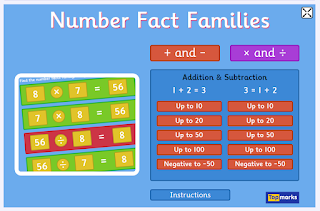As explained in last week's newsletter (available on the school website under the "Our News" tab) all the tasks listed in last week's blog, and indeed this week's, are tasks that your child can choose from. To this end, I'm trying to put up a range of tasks so there is choice rather than trying to swamp children with work.
English - word classes myon project
Later this morning I will be putting a third project on myon but I will explain it fully here in case there are still some login issues. This week we are thinking about word classes. We talk about 4 main classes:
- Nouns (words that name things); e.g. house, shoe, cat
- Adjectives (words that describe the noun); e.g. large, blue, smooth
- Verbs (action or "doing" words); e.g. sit, run, jump
- Adverbs (words to describe how the verb is being done); e.g. slowly, carefully, quickly.
This week we will look at the books on adjectives and adverbs. I would suggest Year 1's could do adjectives and Year 2's to do adverbs but both books are accessible to all children. I have also added the books on nouns and verbs if your child shows an interest in this.
Adjectives
This page describes an elephant and what is around her. Focus on the adjectives used. Ask your child to choose an animal, draw it or find a picture of it online and then describe it and it's surrounding. Try to use interesting and precise adjectives.
Adverbs
This page describes what the animals are doing and how they are doing it. Look at the adverbs ending -ly. Ask your child to draw or find a picture of an animal or person (or superhero!) doing something and then describe how they are doing it.
Maths - Addition and subtraction families
Last week, we talked about strategies to solve addition and subtraction calculations. One of the important factors we discuss is how these operations are the inverse of each other:
If we know 7 + 5 = 12 then we know the inverse: 12 - 5 = 7.
We can show this relationship on a triangle:
In exploring this it is the relationship/patterns between the numbers that are important, not calculating the expressions. Noticing, for example, how in addition the largest number is at the end but in subtraction the largest number comes first.
The game "Number Fact Families" on Top Marks is good for exploring this:
Choose + and - and then the range that your child is comfortable with. I recommend only choosing from the left hand column (1+2=3 not the reverse). Drag in the numbers and signs to make 4 calculations like in the triangle example above. Note there will be 2 addition and 2 subtraction calculations and where the largest number should go for this.
I wish you all well!
KS1 Team



